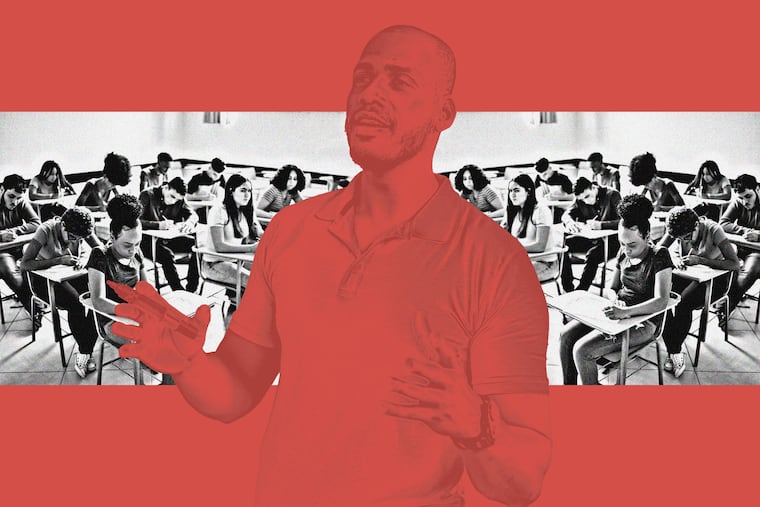Most N.J. teachers don’t look like their students. Here’s how to fix that.
What if the place I loved also had people who grew up like me and understood me? What if we, our community, had teachers of color?

About this series
‘It is easy to feel like I don’t belong.’
I come from a rural town in New Jersey where we rode bikes, fished in ponds, hiked, camped, and where I was one of the only students of color. The school I loved was filled with people who hurt me: students who brought Confederate flags to football games, a kid who called me the N-word, the teachers who stereotyped me. What if the school I loved also had people who grew up like me and understood me? What if we, our community, had teachers of color?
I teach in New Jersey, where 44% of students and 84% of teachers are white. Over 13 years teaching in five schools, I was often the only teacher of color. There is a clear problem with diversity in New Jersey education.
A lasting effect of the lack of diversity in education is that teachers of color may not feel a sense of belonging in our schools and with our coworkers. We may feel a constant separation between us and them. When there is no one in a classroom, auditorium, faculty lounge, or administrative office who looks like me — who shares a similar story and similar cultural narrative — it is easy to feel as if I don’t belong.
Last year, New Jersey signed into law the Diversity and Inclusion Law and the History and Contributions of Individuals with Disabilities and LGBT Law, changing curricula in public middle and high schools.
For instance, schools, as stated in the Diversity and Inclusion Law, are teaching by including economic diversity, equity, inclusion, tolerance, and a sense of belonging in connection with gender and sexual orientation, race and ethnicity, disabilities, and religious tolerance, and updating texts throughout many subject areas.
This is good news. Finally, New Jersey schools seem to recognize the importance of diversity in learning and are doing something about it. But it’s not nearly enough to address the diversity problem in schools.
So, what is the solution? It’s not just racial sensitivity training. It’s not just including more diverse curricula. It’s not just hiring more teachers of color. The solution to improve the sense of belonging in schools for teachers of color — and to retain their talent, which is so desperately needed in our schools — is to redefine how those teachers are valued. We must recognize these teachers not only because they come from marginalized communities but also because they are great teachers.
My ethnicity, being Black and half Jewish-white, is part of my story, part of my identity, but not all of it. While I am a teacher of color, I am still just a teacher, one who loves education — who loves his job.
The only way to build a better system of education in our region is to build it with diverse educators, leading with diverse curricula. Our children deserve the best of what we have to offer: teachers who represent and celebrate our country’s diversity.
Sometimes I think about white students who have never had an experience with an authority figure of color. I think about how many of these students have such a limited worldview. Teaching them diversity is not the same as being taught by diversity.
» READ MORE: Young people are in mental health crisis and New Jersey needs a plan to help | Opinion
In the last 13 years, I have taught thousands of students, mostly white. I think about the impact, hopefully a positive one, that I will have on those kids who haven’t had a teacher that looks like me. At the same time, I think about the students of color, who have never seen someone in this position that looks like them, and just how important it is for them to see their faces and their stories reflected in their teacher.
I think about how half-handed New Jersey education is when it values the appearance of diversity over the actuality of having diversity in all facets of its schools: teachers, administrators, school counselors and psychologists, and their student population. Representation matters.
Davon Loeb is a high school English teacher in New Jersey and the author of The In-Betweens (West Virginia University Press, 2023).